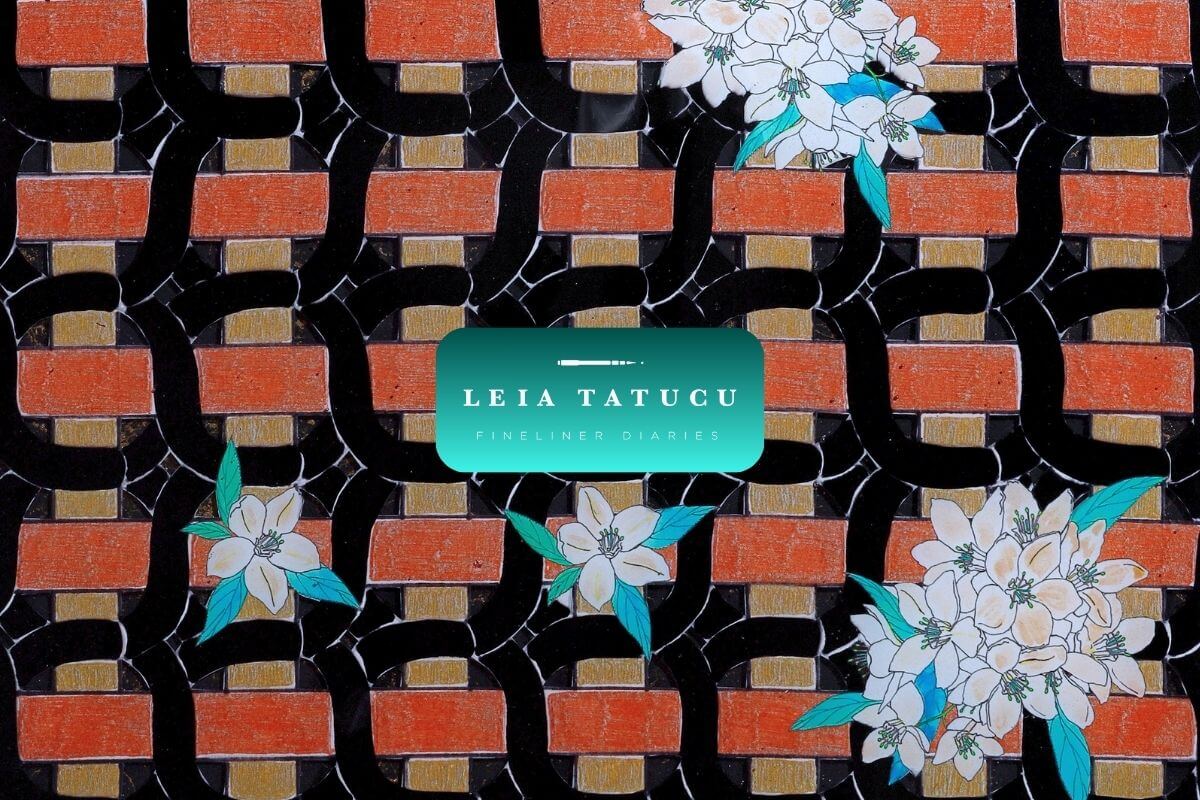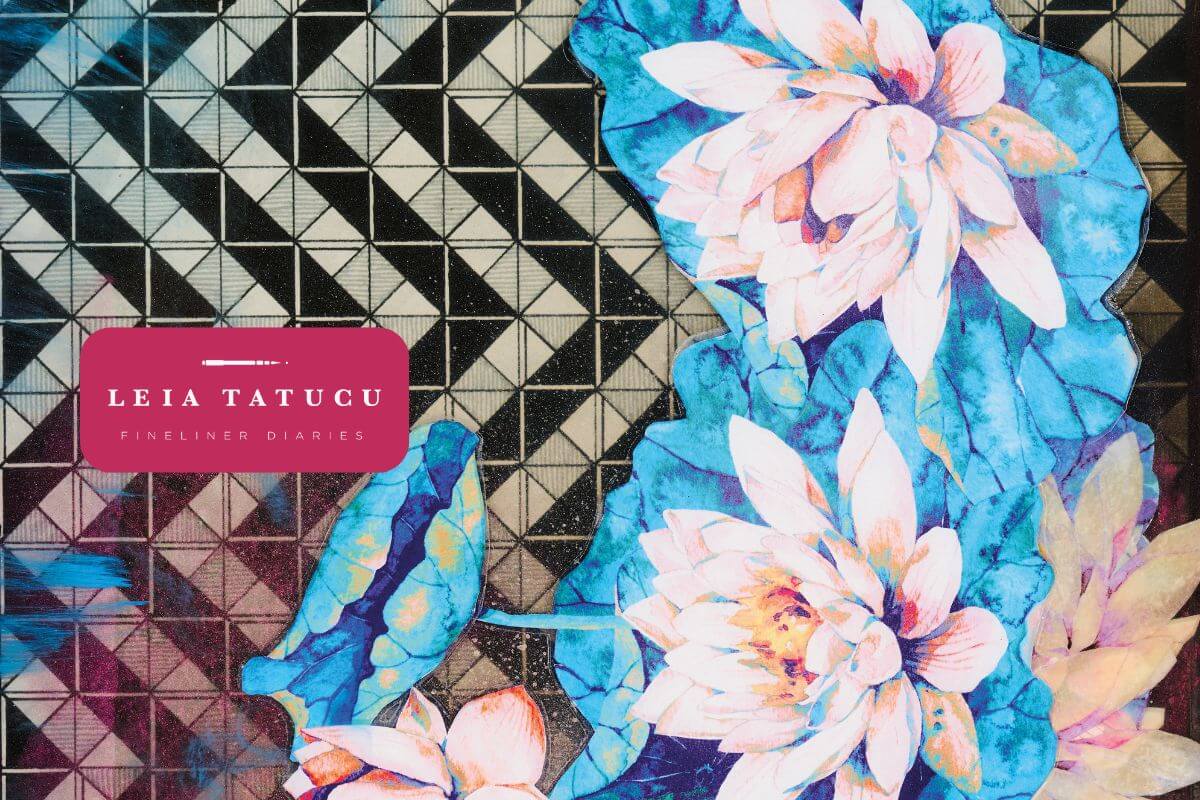
Balancing Acts: Weaving Nature's Flow into Geometric Forms
Look around you. Notice the sharp lines of a city skyline meeting a lush park, or the perfect geometry of a spiderweb sparkling with dew. These contrasts—structured against organic—aren't just beautiful; they're a core principle that has inspired artists for ages. For me, this blend is a constant wellspring of ideas. It's a conversation between the clear, precise world of geometric shapes and the wild, flowing beauty of nature.
My work is heavily influenced by my background as a civil engineer, so it often features precise geometric forms. There’s something deeply satisfying about creating order from clean lines and perfect angles. However, I’ve found that art made only of hard edges can feel rigid and incomplete. It often needs a softer touch to truly come alive. That's where I bring in nature-inspired patterns. Their timeless beauty adds a human, emotional quality to the structured worlds I create with my fineliner pens.
The Balancing Act: Geometry Meets Nature
Geometric patterns bring a sense of stability and order. Their symmetry and precision—like the perfect honeycomb or ancient mosaic tessellations—are predictable and grounding. They appeal to our logical side, offering clarity in a chaotic world. My background in industrial construction has deepened my appreciation for structure and precision, which naturally inspires my art.
But too much rigidity can feel cold or impersonal. That’s where nature-inspired motifs come in. Floral and animal patterns add a sense of movement and life with their organic, flowing forms. A climbing vine, the veins of a leaf, or the spots on a leopard’s coat break the monotony of straight lines and perfect circles. They bring warmth, growth, and a story that connects on an instinctive level.
By blending these natural elements with geometric designs, I strive to create balance—a harmony where logic and emotion meet seamlessly.

The Timeless Language of Floral Motifs
Flowers have always held a special place in art, celebrated across cultures and eras. From ancient Egyptian lotus carvings to the intricate floral designs of the Arts and Crafts movement, these motifs universally symbolize beauty, growth, and life's endless cycle. Their forms are naturally captivating—the gentle curve of a petal, the spiral of a budding rose, the delicate arrangement of a bloom—all examples of nature's perfect design.
When I weave floral patterns into a piece, they act as a gentle counterpoint. Their winding stems and soft petals break the rigidity of geometric lines, creating pathways that guide your eye with a more leisurely, exploratory feel. It's like finding a wildflower pushing through a crack in the pavement—a small yet powerful reminder of nature's persistence and grace. This contrast enriches the artwork, adding layers of meaning and inviting you to look closer. A piece then transcends being just a collection of shapes; it becomes a landscape where the precision of the man-made and the organic beauty of the natural world find common ground.

Animal Patterns: A Touch of the Wild
Florals symbolize growth, while animal motifs bring a sense of wildness and raw instinct. The patterns on animals—zebra stripes, cheetah spots, or the intricate scales of fish—are more than camouflage or decoration. They represent energy, movement, and life itself, tapping into something primal within us.
In my work, I use animal motifs to add dynamism and unpredictability. Unlike the order of geometric patterns, animal prints feel alive, full of motion and story. They hint at a world beyond the frame—a creature moving through its habitat. Combining these contrasting elements creates powerful tension. For example, pairing the strict repetition of a checkerboard with the fluid, irregular spots of a jaguar sparks a dialogue between order and chaos, domesticity and wildness.
This balance mirrors the dualities we all experience in life, making the final piece more engaging and thought-provoking.

Finding Your Own Balance
This blend of structured and natural patterns isn't just for art. It's a powerful principle you'll find everywhere, from interior design to personal fashion. Think of a minimalist room: a potted plant or a rug with a botanical print instantly softens its edges. Or a sharp suit, transformed by a silk scarf featuring a delicate floral or animal motif.
This interaction creates spaces – on canvas or in your living room – that feel both grounded and vibrant. It speaks to our human need for order, while also celebrating the wild beauty and imperfection of nature. For me, as an artist, this has been a true journey of discovery. My work began with the precise lines of fineliner pens, evolving to embrace the organic flow of resin and the endless inspiration from the world outside my window.
The next time you see art or design, pause. Notice this delicate dance. How does the artist balance sharp lines with soft curves? How do natural patterns tell a deeper story? It's a timeless conversation that continues to fuel my own creative drive.





Leave a comment
This site is protected by hCaptcha and the hCaptcha Privacy Policy and Terms of Service apply.